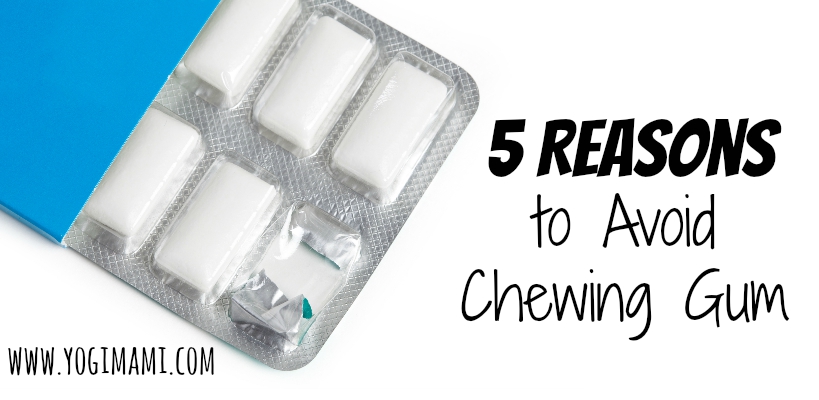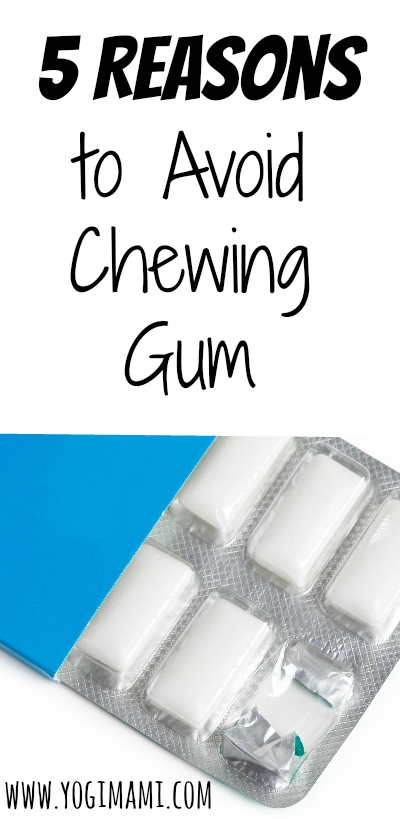Originally, a long, long, L-O-N-G time ago, chewing gum was made from tree sap. Today’s version contains many harmful chemicals and additives that most people are completely unaware of. I began learning about the dangers of gum back in the beginning of my 1st pregnancy. I This post will share with you 5 reasons to avoid chewing gum.
5 Reasons to Avoid Chewing Gum
Modern day chewing gums are made of four major ingredients including synthetic rubber, plastic, sugar, and coloring (dye). Modern day gums are produced from synthetic polymers such as styrene-butadiene rubbers and polyvinyl acetate. Here are 5 more reasons to avoid chewing gum.
1. Aspartame
Aspartame is a known carcinogen and a neurotoxin. It converts itself into formaldehyde when exposed to heat above eighty-six degrees F. This means that aspartame converts into formaldehyde when inside the human body. This chemical is absorbed by the mouth, gums, and the tongue-making it even more dangerous than if injected intravenously. Aspartame passes the spinal cord and the blood-brain barrier when absorbed in the mouth and goes directly into the brain. Even the smallest amount of aspartame can be very dangerous and damaging. When aspartame is ingested into the digestive tract, it breaks down into numerous other poisons. Most Americans are unaware that the candy, gum, and soft drinks that they consume, contain aspartame and the dangers this repeated exposure can cause.
2. Saccharin
Saccharin is another known carcinogen. Government studies have linked the use of saccharin to bladder cancer since 1971. This led to forcing manufacturers to place warnings on any product that contained saccharin. Unfortunately in 2000, the government decided that the link to cancer was less of a concern to humans than to rats, so the label warning requirement was repealed. Despite the government legislation, this additive is harmful and should be avoided at all costs.
3. High Fructose Corn Syrup
High Fructose Corn Syrup is prominent in highly processed foods and is a toxic food ingredient. The commercial food industry promotes the use of high fructose corn syrup because it is cheap to produce. This toxic additive can be found in everything soda, bread, candy, gum, commercial fruit juices, and even some meat. Introduced into the American food supply as a cheap alternative to sugar, high fructose corn syrup is a booming business. HFCS is also found in most chocolate drinks, condiments, ice cream, bakery goods, yogurt, and cereal. This additive often masquerades under the name of crystalline fructose in flavored waters and energy drinks. Aspartame and other artificial sweeteners used in most commercial gums are 200-300 times sweeter than regular sugar.The human body does not metabolize high fructose corn syrup. In fact, it disables the body’s ability to recognize when its full and increases a person’s appetite instead. By digesting HFCS, you are increasing your risk for metabolic syndrome, heart disease, stroke, and diabetes. It increases your risk of developing a serious disease and it not recommended. When this dangerous additive is consumed, the uric acid in the bloodstream rises and blocks insulin. Insulin regulates how the both will use and store sugar for energy. If uric acid levels are high, serious health risks can develop over time including high blood pressure, obesity, and elevated blood cholesterol levels.
4. BHT
The chemical BHT is used as a preservative in gum. It is found also in cosmetics, pharmaceutical drugs, rubber, petroleum, jet fuel, and embalming fluid. (GROSS!) In some cases, gum will contain two embalming fluids, aspartame and BHT.
5. Dyes
Various ‘color lake’ dyes such as blue lake, green lake, red lake, and yellow lake are all derived from petroleum and are known to be dangerous due to its carcinogenic properties. Normally used for textile dying, lake dyes are industrial agents. The petroleum-based lake dyes are derived from rocks and should not be considered food. The body cannot digest gum and even if it could, gum does not provide any essential nutrients that the body can benefit from. It does not repair, nourish, or sustain the human body, a definition of food, however the FDA classifies chewing gum as food.
Alternative Options to Conventional Chewing Gum.
If you are looking to a natural alternative to conventional chewing gum, have no fear! Here is an all natural version without the nasty, harmful additives.
Like what you've read? Sign-up for my newsletter and get tips and other information on how to live a healthier and happier lifestyle!


